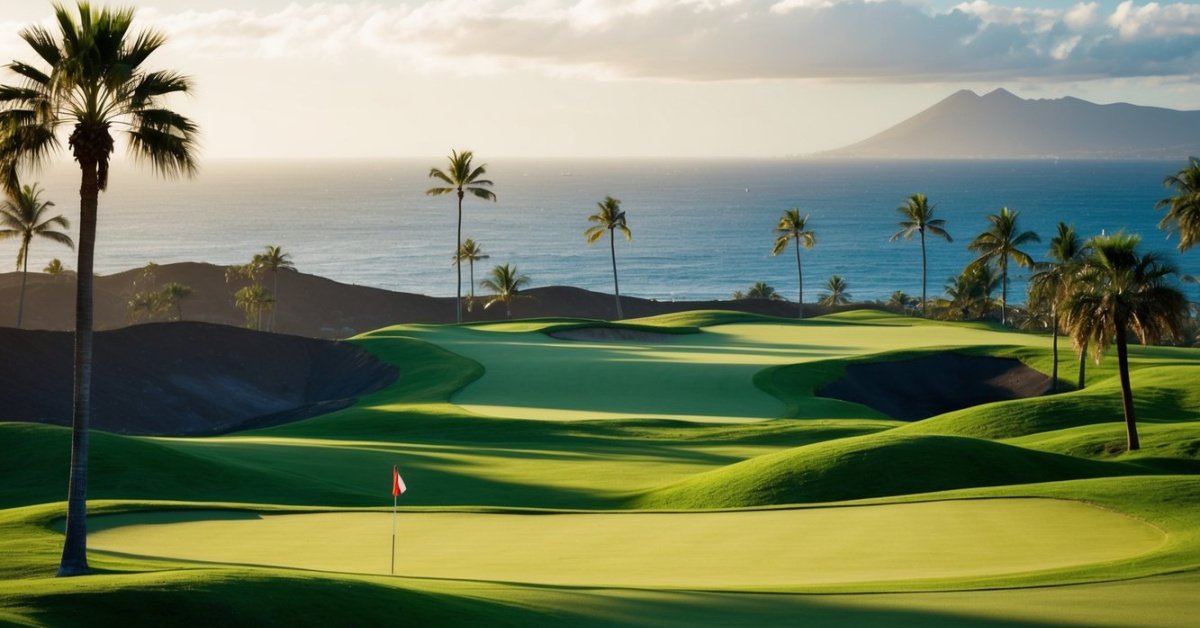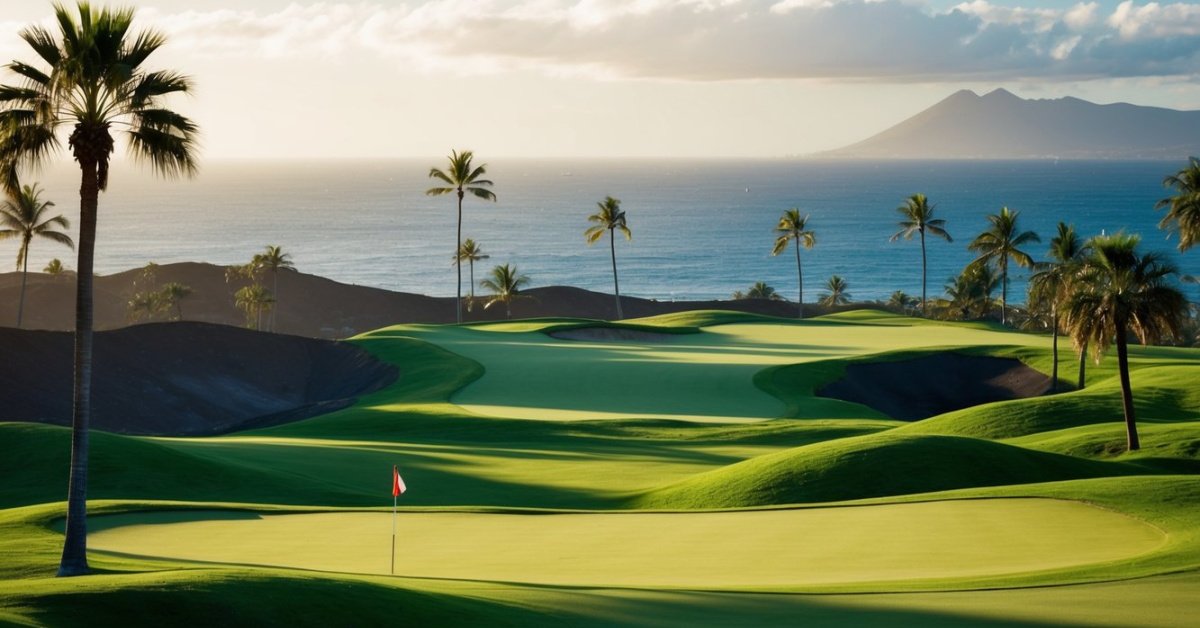Ever wondered if you’re stuck with the classic white golf ball? Or perhaps you’ve eyed those neon ones with curiosity? Well, you’re in for a treat because the world of golf balls is more colorful than you might think!

In this article, you’ll discover the ins and outs of using different colored golf balls and how they can affect your game. Whether you’re a seasoned pro or a casual weekend golfer, knowing your options could give you an unexpected edge.
The Pros and Cons of Using Different Colored Golf Balls
When you’re out on the greens, visibility is a key factor in your game. Opting for a fluorescent yellow or a bold red ball can make it a lot easier to track against the sky and on the ground. You’ll likely spend less time searching for your ball, keeping the game moving and your mood lifted.
Benefits of Highly Visible Golf Balls
- Easier to follow during flight and on the course
- Stand out against the green and fall foliage
- Helpful in low-light conditions or when it’s overcast
But it’s not just about finding your ball. Some colors can help with focus and alignment. If you’ve got a white ball with a single red line, aligning that on the green for your putt can give you an extra edge by improving your stroke path.
Contrast can play a massive role as well. A darker colored golf ball on a bright, sunny day stands out more than traditional white, making your eye-hand coordination sharp.
Drawbacks to Consider
Not all courses are the same, and neither are weather conditions. If you’re playing in the winter or in an area where the ground is covered in frost or snow, a white ball might just become invisible. Conversely, during summertime, picking a dark blue ball might lose you an advantage if you end up in the water hazards.
Some players find traditional white balls to be less distracting, claiming that the simplicity helps them concentrate better. Plus, if you’re in a formal tournament, you’ll want to check the rules—some competitions have strict guidelines on ball color.
Here’s a quick rundown:
| Advantages | Disadvantages |
|---|---|
| Better visibility | Hard to find in specific conditions |
| Easier alignment | Potential tournament restrictions |
| Enhanced focus | Can be distracting for some players |
So, next time you’re stocking up, consider how the color of your golf balls might affect your game. It’s worth experimenting with a few shades to see what works best for you and your style of play. Remember, a minor change could lead to a major improvement on the scorecard.
How Colored Golf Balls Can Impact Visibility on the Course
« Is a Yellow Golf Ball Easier to See? Boost Your Game with Better Visibility
As an experienced golfer with a low handicap, you’re always looking for ways to keep your game sharp. One factor that might not always make it to your strategy list is the color of your golf ball. But believe it or not, it can make a significant difference.
When you’re scanning the fairway or searching the rough, the hunt for your ball can be more than a minor annoyance — it can disrupt your rhythm and affect your mental game. Here’s where colored golf balls come into play. Visibility is where these balls really shine, quite literally.
The Science of Sight
Your eyes are drawn to contrast and movement. On a lush green background, a standard white ball might seem like a smart choice, but it’s not always the most visible. This is where fluorescent and bold-colored golf balls stand out. The stark contrast to the greenery means your eyes can spot them with ease.
Misty mornings or late afternoon rounds also add complexity to your visibility scenario. Low light conditions make the bright colors of a golf ball pop on the contrasting backdrop.
Color Psychology and Your Performance
Colors are powerful; they influence our psychology in subtle yet profound ways. Some studies suggest that certain colors can enhance focus and alignment. When you’re aligning your shot, a brightly-colored ball can provide a clear visual path to your target, possibly improving your accuracy.
Experiment on the Course
Don’t dismiss the traditional white ball just yet — it’s been the standard for a reason. However, on days when the sun decides to hide, or when you’re playing a course with dense foliage, you might appreciate having a colorful alternative in your bag. Your goal is to reduce the time spent ball-hunting and increase the time mastering those challenging shots. Here are the benefits to consider:
- Enhanced visibility in various lighting and weather
- Improved focus and alignment on your shots
- Less time searching for lost balls, more time playing
Taking these factors into account, it’s worth experimenting with different colored golf balls during your practice rounds to see how they perform across different courses and conditions. After all, the smallest adjustments can sometimes lead to the most noticeable improvements in your game.
Does the Color of Your Golf Ball Affect Performance?
It’s tempting to think that the color of your golf ball is just a matter of personal preference or a fashion statement. But when you’re hustling to shave off a stroke or two, color choice might not be so trivial. Science and psychology suggest that the hue of your ball could have an impact on your game.
Colored golf balls have made quite a splash on the pro tour, and you might’ve noticed more of them in your weekend foursome too. The question is: do they really make a difference? Well, it turns out color can influence things like visibility and focus. For instance, yellow golf balls are very popular because they’re easier to spot in the air and on the fairway.
Visibility isn’t the only factor, though. Some studies argue that color can influence your psychological state. A red ball might evoke feelings of power and aggression – useful when you’re trying to power through a long drive. Conversely, blue is said to have a calming effect, potentially helping you maintain composure during those nail-biting putts.
However, it’s crucial not to get too caught up in the color game. Remember, it’s not just about seeing the ball but also about how it plays. Ball construction and compression are what truly impact the ball’s performance, with factors such as:
- Spin rate
- Distance control
- Feel around the greens
In essence, while a more visible ball can help keep your eyes locked on target, you’ll want to match that with the right performance characteristics that suit your swing style and conditions.
Don’t be afraid to mix it up during practice rounds. Try different colored balls and pay attention to not just how they look, but how they feel off the clubface, their reaction on greens, and the overall feedback you get. Whether it’s the classic white or a vibrant orange, the best ball for you is one that offers the right blend of visibility, feel, and performance.
The Psychology of Golf Ball Colors
Ever wondered if the color of your golf ball could actually influence your game? Color psychology isn’t just for marketers and designers; it’s at play even in golf. You’ve probably felt it yourself, even if you haven’t realized it.
Bold colors like red are said to ignite a sense of power and aggression. When you tee off with a red ball, you might notice a psychological boost, an extra kick in your drive. It’s like you’re tapping into that primal instinct to attack the course with all you’ve got. On the flip side, seeing that assertive hue might spike your heart rate a bit, potentially affecting your finesse on more delicate shots.
Conversely, there’s the calming effect of blue and green balls. They’re less common on the course, but their presence can be quite soothing. This might help when you’re trying to make a crucial putt or carefully plotting out a strategic approach shot.
Then there’s the traditional white. It’s a blank canvas, serving up no distractions. You’ve played countless rounds with it, and there’s a serene familiarity that comes with watching it soar down the fairway.
But here’s where it gets interesting. The color yellow strikes a unique balance between visibility and psychology. It’s easier to track against the sky and the rough, which lowers your stress levels when you’re frantically searching for your ball. At the same time, it’s a cheerful color that many golfers find uplifting, keeping your spirits high even if the game isn’t going your way.
Remember, the best color for your game might depend on your mood, your personal preferences, and the conditions of the day. The key is to find what works for you and gives you that sweet spot of confidence, visibility, and performance. So go ahead, mix it up with your practice rounds. Swap that white ball for something a little more vivacious and see how it feels to break tradition. After all, in a game where mental fortitude is just as important as physical skill, a splash of color might be the edge you need.
Conclusion
So there you have it—choosing the right golf ball color is more than just a style choice. It’s about finding what works best for your game, both mentally and visually. Whether you’re feeling bold with a red ball or serene with a blue one, remember that it’s the blend of visibility, feel, and performance that’ll give you an edge on the course. So go ahead, experiment during your practice rounds and see which hue suits you best. After all, the right color might just be the secret ingredient to shooting your lowest score yet. Happy golfing!
Frequently Asked Questions
What impact do colored golf balls have on performance?
Colored golf balls can influence performance through psychological effects and visibility. Colors like red can evoke power, while blue and green may have a calming effect. Visibility, especially with yellow balls, can also contribute to performance, as they are easier to track.
Can the color of a golf ball affect a golfer’s emotions?
Yes, the color of a golf ball can affect a golfer’s emotions. For example, red golf balls can stimulate feelings of aggression and power, whereas blue and green balls are associated with calmness.
Is there a balance between golf ball color visibility and psychology?
Yellow golf balls provide a good balance between visibility and psychological effect. They are not only easier to see against various backgrounds on the golf course but also can help uplift a golfer’s mood.
Are there other factors besides color that influence golf ball performance?
Yes, ball construction and compression are significant factors that influence golf ball performance. These elements affect the distance and accuracy of shots, regardless of the ball’s color.
Should golfers use different colored balls in practice rounds?
Golfers are advised to experiment with different colored balls during practice rounds to find the best combination of visibility, feel, and performance suited to their game.










